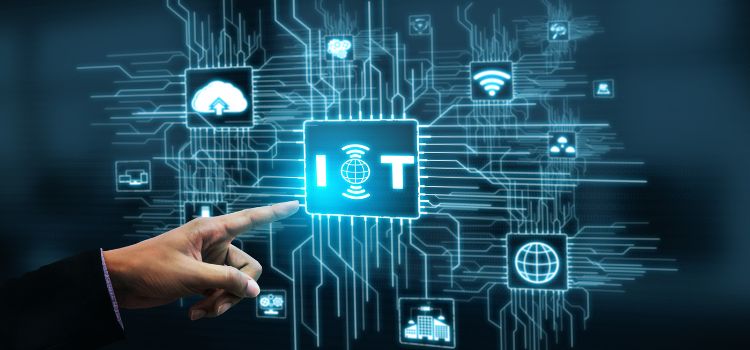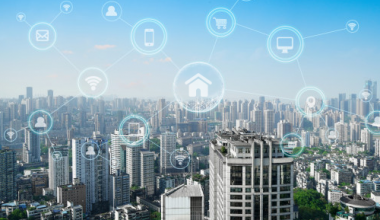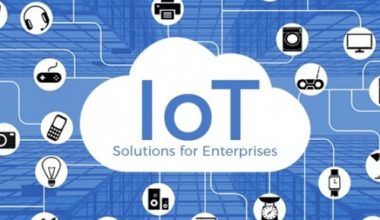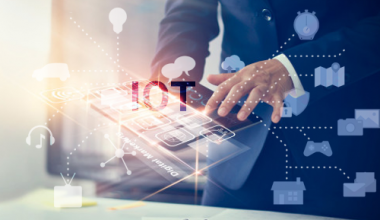Key technologies stand out – PLC (Programmable Logic Controller) and IoT solutions (Internet of Things), with its industrial counterpart, IIoT (Industrial Internet of Things). Understanding the basics and strengths of these technologies is crucial for businesses aiming to enhance efficiency, automate processes, and stay ahead in the rapidly evolving industrial landscape.

Decoding PLC
PLC, or Programmable Logic Controller, is a tried-and-true hardware-based control system that has been the backbone of industrial automation for decades. Think of it as the reliable workhorse that controls machines and processes in factories and manufacturing plants. PLCs use programmable software, often programmed in specialized languages like ladder logic, to automate operations.
Key Attributes of PLC
- Reliability: PLCs are known for their high reliability, making them ideal for controlling real-time manufacturing processes in harsh environments.
- Standalone Operation: PLCs typically function independently, connected directly to machines or a local network.
- Programming Specific Tasks: PLCs can be programmed to perform specific tasks, providing consistency and long-term performance.
Decoding IoT and IIoT
On the other side, we have the innovative technologies of IoT solutions and IIoT, which have ushered in a new era of connectivity, data analysis, and flexibility in industrial automation.
Understanding IoT
IoT solutions, or the Internet of Things, refers to a network of interconnected devices that communicate with each other through the Internet. These devices, equipped with sensors, software, and connectivity options, collect and transmit real-time data. IoT enhances efficiency, convenience, and decision-making by allowing devices to interact autonomously.
Applications and Examples
IoT solutions find applications in various industries, from smart homes with devices like thermostats and smart locks to wearables monitoring health data and industrial settings optimizing production processes.
Key Technologies
Key IoT solutions technologies include sensors for data collection, various connectivity options like Wi-Fi and Bluetooth, data processing capabilities, and actuators for converting data-driven decisions into physical actions.
Understanding IIoT
IIoT, or the Industrial Internet of Things, takes the principles of IoT solutions and applies them specifically to industrial settings. It aims to maximize efficiency, reduce costs, and improve overall performance in industries such as manufacturing, energy, and transportation.
Applications and Examples
IIoT applications include smart manufacturing, energy management, and fleet management. It plays a crucial role in streamlining production processes, enhancing power generation, and optimizing logistics operations.
Key Technologies
Key technologies enabling IIoT include sensors and actuators, specialized connectivity options like Low-Power Wide-Area Networks (LPWAN), edge computing for faster response times, and advanced data analytics for making informed decisions.
Differences Between PLC, IoT, and IIoT
Scope and Focus
- PLC is dedicated to controlling industrial processes in a standalone manner.
- IoT solutions have a broader focus, connecting devices for consumer and industrial applications.
- IIoT narrows down its focus to industries, aiming at improving efficiency and productivity.
Security and Privacy
- PLCs prioritize security through dedicated hardware controls and isolated networks, ensuring robust protection.
- IIoT prioritizes robust security measures due to its involvement in critical infrastructure and sensitive industrial data.
- IoT devices have security measures but may be less sophisticated compared to IIoT.
Connectivity and Interoperability
- PLCs excel in connectivity and interoperability within local networks, seamlessly integrating with industrial machines.
- IoT solutions devices use familiar networking protocols like Wi-Fi and Bluetooth, prioritizing ease of setup.
- IIoT demands more specialized and diverse connectivity, including wired connections and wireless mesh networks, focusing on reliability and low latency.
Which Technology is Best for Your Industrial Automation Needs?
The choice between PLC, IoT, and IIoT hinges on the specific requirements and objectives of your industrial automation system.
PLC
- Best for high-speed, real-time manufacturing processes in harsh environments.
- Reliable and provides consistent, long-term performance.
- Suitable for standalone operation.
IoT
- Ideal for applications requiring connectivity and the ability to collect and analyze data from multiple sources.
- Enables real-time monitoring and control from anywhere in the world.
- Highly configurable for various tasks.
IIoT
- Optimal for industrial settings, maximizing efficiency, reducing costs, and improving overall performance.
- Specialized applications include smart manufacturing, energy management, and logistics optimization.
- Utilizes advanced technologies like edge computing and specialized connectivity options.
Evolution of PLC
Over the decades, PLC technology has evolved significantly, adapting to the changing needs of industrial automation. Initially developed to replace complex relay systems, PLCs have transformed into sophisticated controllers capable of handling intricate manufacturing processes. The historical progression of PLCs, from their foundational principles to the cutting-edge applications seen in today’s industrial landscape is quite rapid.
The Rise of IoT
As industries embraced the digital era, the Internet of Things emerged as an important thing. IoT, with its network of connected devices and sensors, has revolutionized industrial processes. From real-time monitoring to data-driven decision-making, IoT’s impact extends across various sectors, creating a more interconnected and efficient industrial ecosystem.
The Rise of IIoT
Building upon the principles of IoT, the Industrial Internet of Things (IIoT) takes center stage. IIoT is specifically tailored for industrial applications, introducing advanced connectivity solutions and focusing on maximizing efficiency, reducing costs, and enhancing overall performance. Real-world examples illustrate the transformative power of IIoT in sectors such as manufacturing, energy, and logistics.
Future of these technologies
In certain industrial scenarios, a hybrid approach that combines PLC, IOT, and IIoT technologies proves to be the most effective solution. The integration of these technologies optimizes automation processes. It highlights how a judicious combination can leverage the strengths of each technology, offering a detailed and specific solution to meet specific industrial automation needs.
Conclusion
For industrial automation, the choice between PLC, IoT, and IIoT is not a one-size-fits-all decision. It depends on the unique requirements, objectives, and technical expertise of your business. PLC offers reliability and consistency in real-time processes, while IoT and IIoT bring connectivity, flexibility, and advanced data analysis capabilities.
A combination of these technologies might be the optimal solution. For instance, using PLCs to control manufacturing processes alongside IoT devices for inventory tracking and supply chain optimization.
As technology continues to advance, staying informed about the strengths and considerations of PLC, IOT, and IIoT is crucial for making strategic decisions that will drive your industrial automation system toward success in the modern era.














